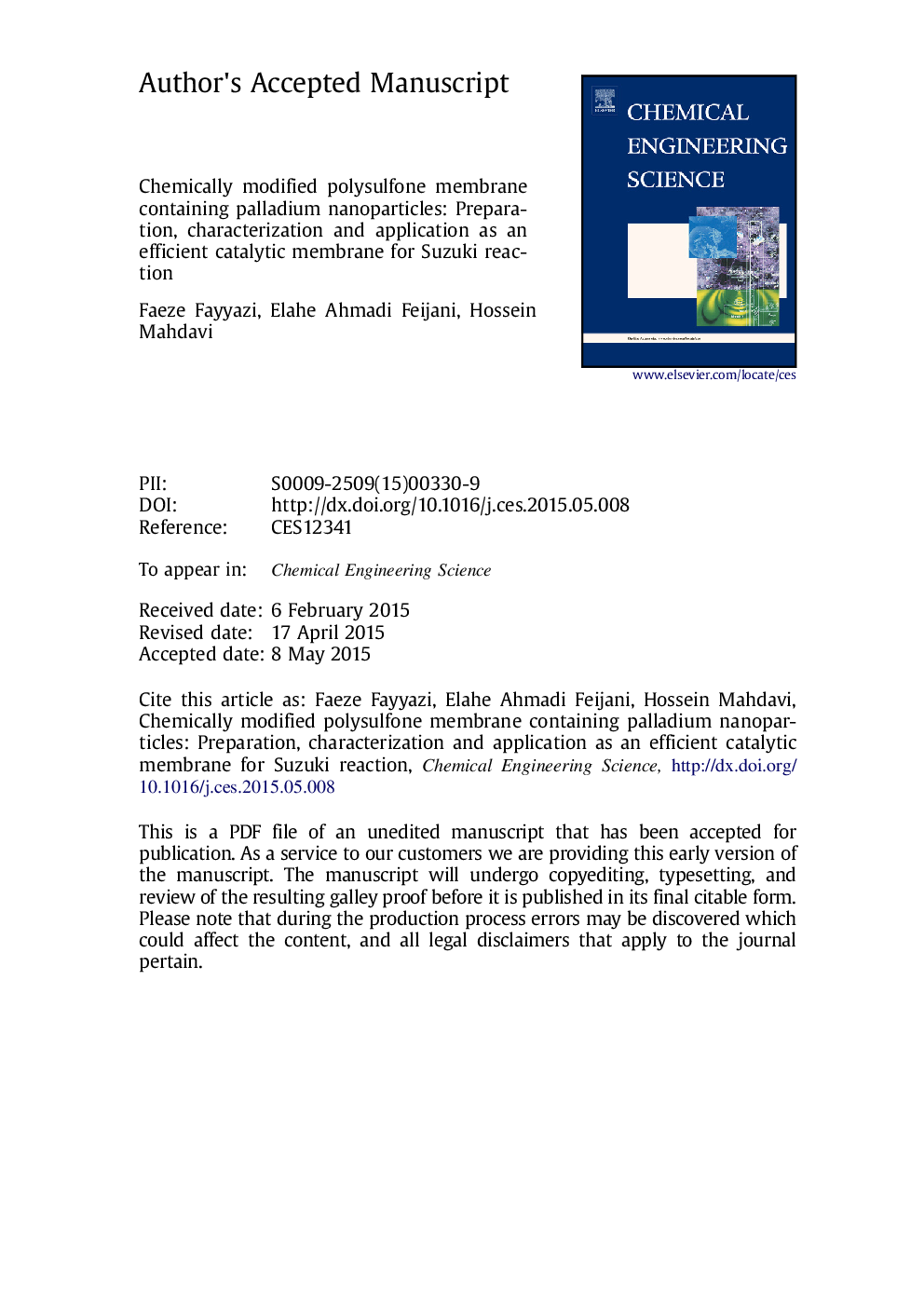| Article ID | Journal | Published Year | Pages | File Type |
|---|---|---|---|---|
| 6589771 | Chemical Engineering Science | 2015 | 18 Pages |
Abstract
A new nanocomposite catalytic membrane was prepared based on chemically modified polysulfone and palladium nanoparticles. Modification of PSf was performed by chloromethylation and then amination with ethylenediamine. Pd (II) were anorched to amine groups of the amino functional PSf and the corresponding Pd (II) containing membrane were formed by phase inversion process. Pd nanoparticles were obtained after reduction of Pd (II) particles using NaBH4 as reducing agent. After each step, the products catal were fully characterized by means of different techniques such as FT-IR, 1HNMR, TGA, DSC, UV-vis spectroscopy and SEM as need. The formation of Pd nanoparticles was studied by XRD and an average particle size about 20Â nm was estimated. SEM micrographs showed Pd nanoparticles distribution throughout the catalytic membranes. In order to evaluate the catalytic properties of the membrane, Suzuki coupling reaction was carried out in a home made cell.
Related Topics
Physical Sciences and Engineering
Chemical Engineering
Chemical Engineering (General)
Authors
Faeze Fayyazi, Elahe Ahmadi Feijani, Hossein Mahdavi,
